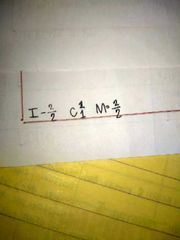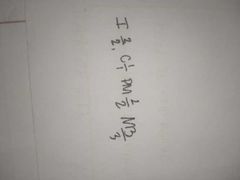![]()
![]()
![]()
Use LEFT and RIGHT arrow keys to navigate between flashcards;
Use UP and DOWN arrow keys to flip the card;
H to show hint;
A reads text to speech;
79 Cards in this Set
- Front
- Back
|
Portal entry of digestive system extends from the lips anteriorly to oropharyngeal isthmus. Posteriorly |
Oral cavity |
|
|
Space between lips and cheeks (externally) Teeth and gingiva (internally) |
Vestibule |
|
|
2 midline folds connecting mucosa on inner aspect of lips to gingiva between central incisor teeth |
Labial frenula |
|
|
Small elevation on buccal mucosa |
Parotid papilla |
|
|
Boundaries of oral cavity proper |
1. Anterior and lateral 2. Posterior 3. Superior 4. Inferior |
|
|
Anterior or lateral |
Teeth and gingiva |
|
|
Oropharyngeal |
Posterior |
|
|
Palete (soft and hard) |
Superior |
|
|
Mylohoid |
Inferior |
|
|
Structure of oral cavity |
1. Lips 2. Frenum 3. Teeth 4. Tongue 5. Palate 6. Mucosa 7. Maxilla 8. Mandible 9. Sakivary glands |
|
|
Consists of only one shape of teeth |
Homodont |
|
|
Several groups of teeth |
Heterodont |
|
|
Consist of two sets of teeth |
Diphyodont |
|
|
Has one set |
Monophyodont |
|
|
Have several set of grouoy of teeth |
Polyohyodont |
|
|
System indentifying the kind of tooth. Its position in the oral cavity and nuner of e/a kind |
Dental formula |
|

|
Primary |
|

|
Primary |
|
|
Primary (dentitions) |
I 2 C 1 M 2 |
|
|
Permanent (dentitions) |
I 2 C 1 PM 2 M 3 |
|
|
System identifying a toothe mm and it's position to the oral cavity with the use of symbol such as numbers and letters |
Dental notation |
|
|
Uses vertical line to indicate whether the tooth is on the right or left; horizontal for maxi or Mandi |
Palmer's dental notation |
|
|
1st number is the quadrant 2nd number is the tooth within the quadrant |
FDI/ 2 digit system |
|
|
Uses number 1 to 32 to permanent A to T for primary; each tooth as has its own numerb |
Universal/ army type |
|
|
Anatomical parts of the tooth |
1. Crown 2. Neck 3. Root 4. Apex |
|
|
2 kinds of crown |
Anatomical Clinical |
|
|
Visibil crown |
Clinical |
|
|
Type of crown Covered by enamel |
Anatomical |
|
|
Elevations |
Cusp Ridges Tubercle Mamelons |
|
|
Name the Depressions: |
Fossa Fissure Pit Sulcus Groove |
|
|
Bone of the tooth socket |
Alveolus |
|
|
Portion of the jaw serving as support to the tooth |
Alveolar process |
|
|
Space or figure formed by two diverging lines |
Angle |
|
|
Tip of the toot's root |
Apex |
|
|
Surface of a tooth parallel to its long axis |
Axial surface |
|
|
Tooth with 2 cusps |
Bicuspid |
|
|
Pertaining to the cheeks |
Buccal |
|
|
Covers the root of the tooth in a thin layer |
Cementum |
|
|
The point on a tooth that touches an opposed tooth |
Contact area |
|
|
Knife like sharpened working angle |
Cutting edge |
|
|
Pointed portion of the tooth |
Cusp |
|
|
Single cusped tooth |
Cuspid |
|
|
1st set of the teeth on human |
Deciduous teeth |
|
|
Beneath the enamel and cementum |
Dentin |
|
|
Distant from the median |
Distal |
|
|
Opening that widens outwardly or inwardly |
Embrassure |
|
|
Hard calcified tissue |
Enamel |
|
|
Developmental break) fault in the tooth enamel |
Fissure |
|
|
Irregular depression/ concavity |
Fossa |
|
|
Soft tissue; encircling the necks of the erupted teeth |
Gingiva |
|
|
Narrow elongated depression |
Groove |
|
|
Shallow groove or line between the primary parts of the crown or root |
Developmental groove |
|
|
Crossed by developmental groove |
Sulcate groove |
|
|
Shallow linear depression on the tooth Surface |
Supplemental groove |
|
|
Tooth for cutting |
Incisor |
|
|
Space between adjacent teeth in a dental arch |
Interproximal space |
|
|
Lips |
Labial |
|
|
Tongue |
Lingual |
|
|
3 rounded protuberance found on a newly erupted teeth |
Mamelons |
|
|
Near the median |
Mesial |
|
|
Bitting surface |
Occlusal surface |
|
|
2nd set of thr teeth |
Permanent |
|
|
Small pinpoint depression |
Pit |
|
|
Connective tissue containing blood vessels and nerve tissue |
Pulp |
|
|
Space between tooth w/c contains pulp |
Pulp cavity |
|
|
Portion of the pulp cavity contained in the crown |
Pulp chamber |
|
|
Portion of pulp cavity inside the root of a tooth |
Root canal |
|
|
Any linear elevation on the surface of the tooth |
Ridge |
|
|
Ridge that Descends from the tips of the cusp |
Triangular ridge |
|
|
Union of 2 triangular ridge |
Transverse ridge |
|
|
Rige crossing obliquely |
Oblique ridge |
|
|
Rounded borders of the enamel |
Marginal ridge |
|
|
Distinct ridge on bucal surface |
Buccogingival ridge |
|
|
Ridge on lingual Surface |
Linguogingival ridge |
|
|
Bony portion separating 2 adjacent teeth |
Septum |
|
|
Bony portion separating 2 adjacent teeth |
Septum |
|
|
Permanent teeth |
Succedaneous teeth |
|
|
Long depression on the tooth |
Sulcus |
|
|
Smallest elevation on some portion of the crown |
Tubercle |

